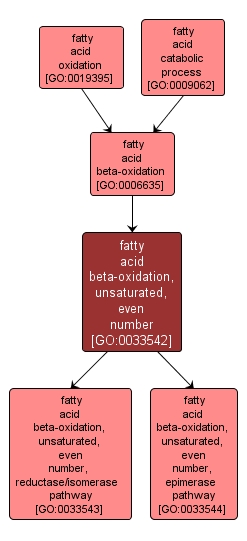GO TERM SUMMARY
|
| Name: |
fatty acid beta-oxidation, unsaturated, even number |
| Acc: |
GO:0033542 |
| Aspect: |
Biological Process |
| Desc: |
A fatty acid beta-oxidation pathway by which fatty acids having cis-double bonds on even-numbered carbons are degraded. Fatty acid beta-oxidation begins with the addition of coenzyme A to a fatty acid, and ends when only two or three carbons remain (as acetyl-CoA or propionyl-CoA respectively). |
|

|
INTERACTIVE GO GRAPH
|














